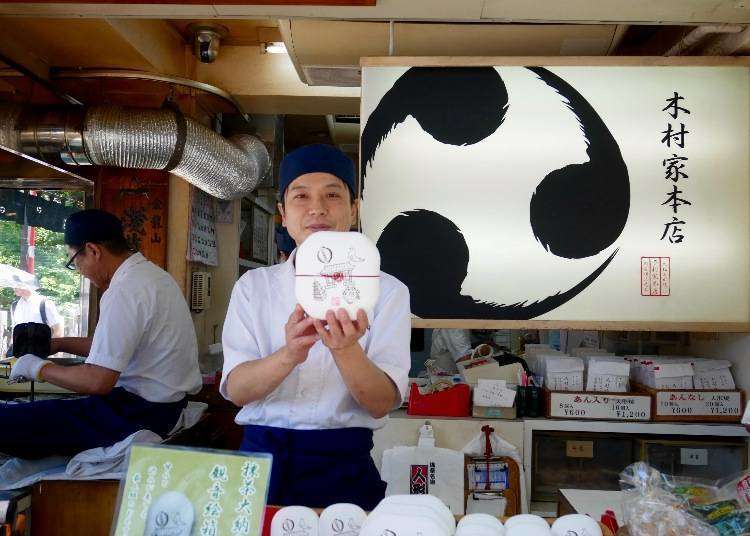
Asakusa is one of the most popular spots for first-time visitors to Tokyo. It is famous not only for Kaminarimon Gate and Sensoji Temple, but also for unique old shops that sell standard Japanese fare as well as sweets. Today we will introduce comforting sweets found in and near Asakusa, Kaminari okoshi with a history stretching back more than 250 years in Asakusa, the cute, ningyo-yaki, long a tradition in Asakusa, and the oldest onigiri shop in Tokyo. Enjoy these delightful treats while strolling around Asakusa savoring its long history and culture!
Cute Ningyo-yaki! Ganso Kimura-ya is a landmark like Sensoji Temple and Kaminarimon Gate
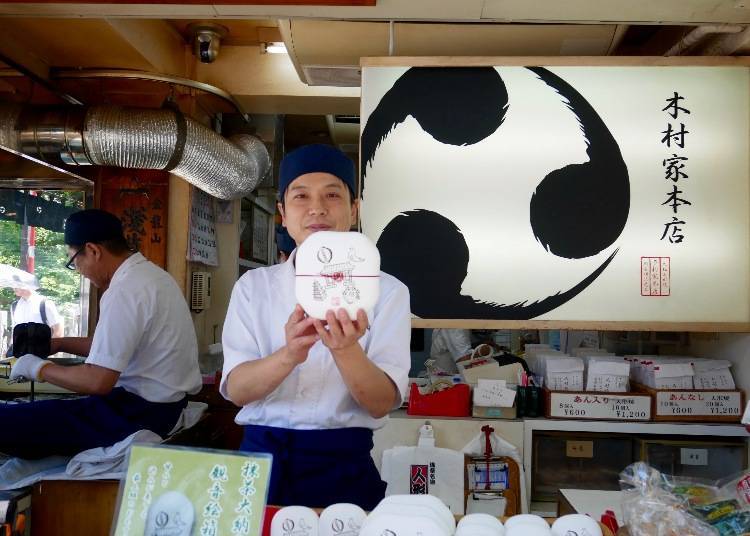
Ningyo-yaki gets its name from Nihonbashi’s Ningyocho neighborhood where it originated and is considered one of the three famous sites in Asakusa along with Kaminarimon Gate and the five-storied pagoda of Sensoji Temple. Made from flour, eggs, and sugar, it resembles the Baby Castella of Taiwan, but has a more delicate and firmer texture.
Kimura-ya, established in 1868, is the oldest ningyo-yaki shop in Asakusa. It comes in four shapes: the five-storied pagoda, Raijin (the God of Thunder), a paper lantern, and a dove. The shapes and taste have not changed during the 150 years since its inception.
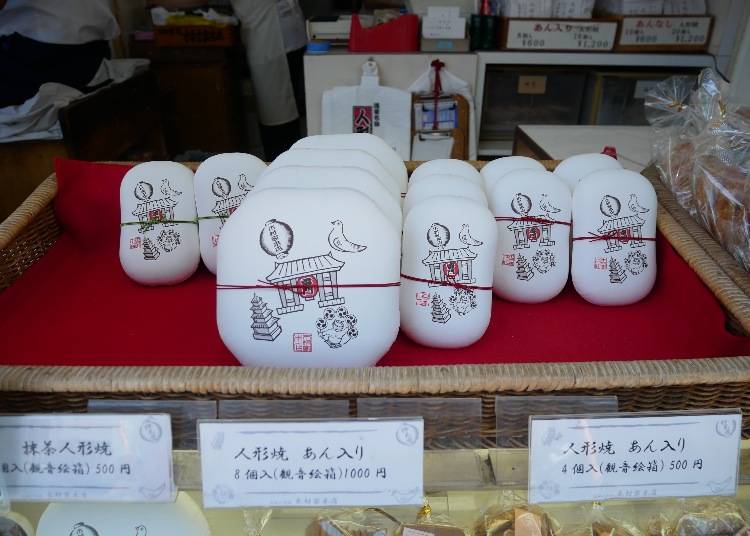
There are three types of Kimura-ya Ningyo-yaki: the original without bean jam, one with bean jam, and the other matcha flavored. It comes in a cute paper box that makes it perfect as a souvenir. You can also purchase it without the box, at a lower price, for your own enjoyment.
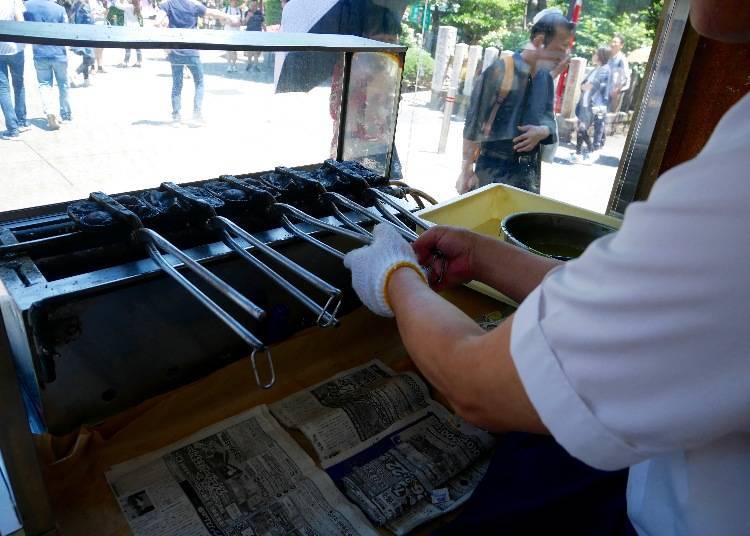
Kimura-ya Ningyo-yaki is made one at a time by a veteran craftsman. You can sense the tradition in the shape of each of the Ningyo-yaki.
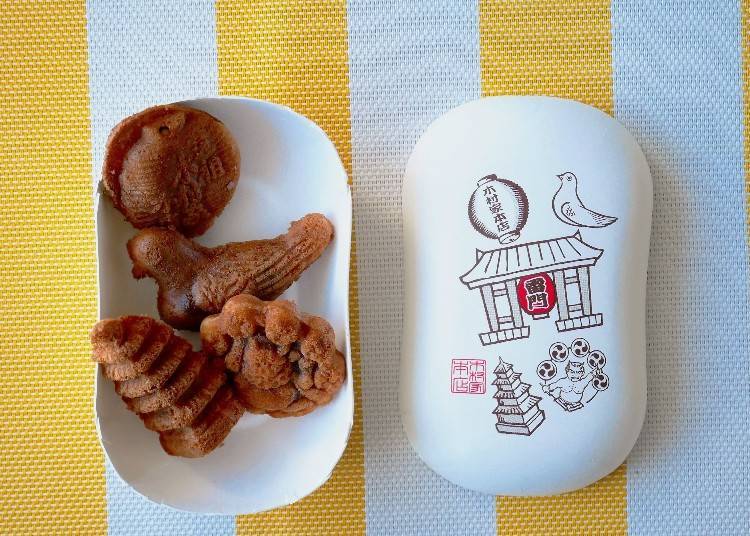
The Ningyo-yaki are truly cute and most definitely a comfort sweet. From the top: Kimura-ya lantern, dove, Raijin, and five-storied pagoda; the design on the paper box is also cute! Made from specially selected eggs and flour, it has a simple, yet delicious taste rich in flavor with a hint of sweetness. The Ningyo-yaki filled with bean jam has just the right sweetness encased in shell with a soft texture. It is hard to stop eating this comforting sweet once you begin.
-
Ganso Kimura-ya Ningyoyaki Honpo元祖木村家人形焼本舗
- Address 〒111-0032 東京都台東区浅草2-3-1 / 2-3-1 Asakusa, Taito-ku, Tokyo, 1110032, Japan
-
Nearest Station
3-minute walk from Asakusa Station (Ginza line, Asakusa line)
Hours: 9:30 - 18:30
Imo Yokan of Funawa, a Shop with a 100-year History
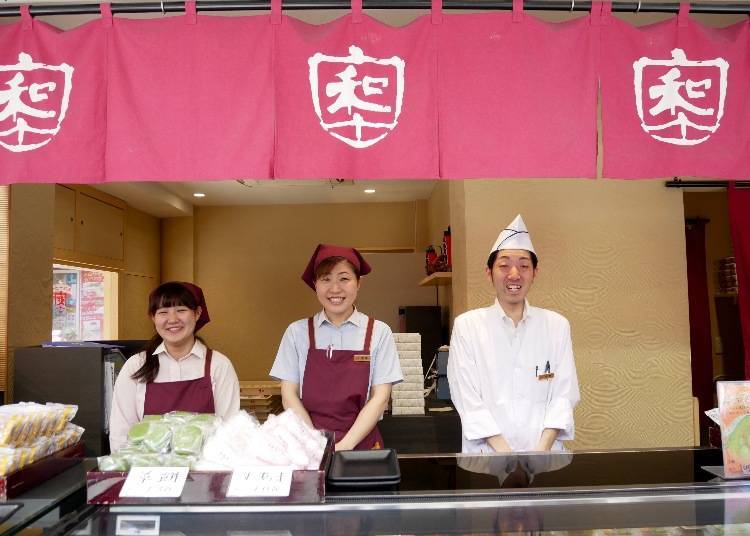
Funawa, established in 1902, sells many types of traditional Japanese sweets. Back then traditional Japanese sweets (wagashi) were very expensive treats and the founder, Mr. Kobayashi, wanted to make them so that ordinary folk could also enjoy them. The business began as a vendor of sweet potatoes, but then with the cooperation of the traditional Japanese sweets craftsman Mr. Ishikawa, they studied how to use sweet potatoes, properly steam them, and use the right amount of sugar eventually developing traditional Japanese sweets made from sweet potatoes. They also perfected the imo yokan which today is also very popular. Loved by local residents, there are six Funawa shops in Asakusa.

Photo of individually packaged imo yokan. In addition to imo yokan, the shops also sell other interesting and delicious sweets such as anmitsu and kuzumochi. Prices range between 100 and 300 yen.

Inside the package is the brightly yellow-colored imo yokan. Craftsmen carefully peel each sweet potato before steaming them to make imo yokan. No food coloring, flavoring, or preservatives are used and only a little salt and sugar are added, so the natural flavor of the sweet potato remains.
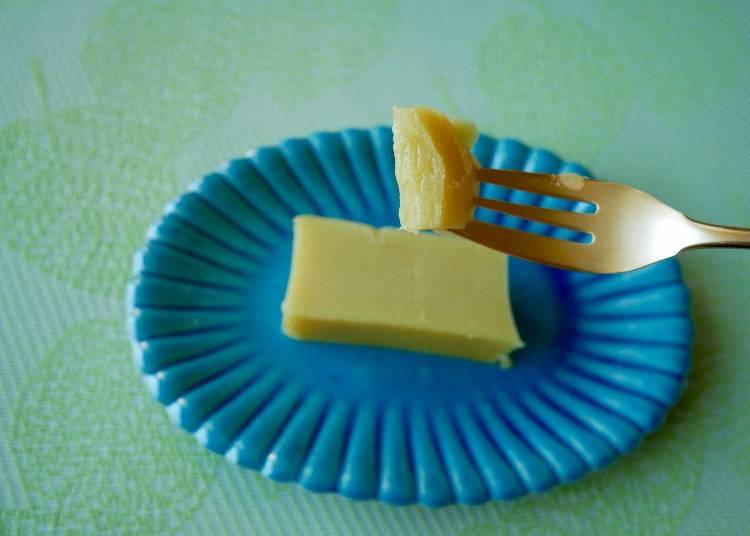
Chilled imo yokan is delicious in both summer and winter. It has a simple and elegant natural flavor of the mildly sweet and moist sweet potato. Neither too hard nor too soft, the texture is perfect making it easy to eat and a favorite with both old and young alike.
-
Funawa (Nakamise 3 Gouten)舟和 仲見世3号店
- Address 〒111-0032 東京都台東区浅草1-20-2 / 1-20-2 Asakusa, Taito-ku, Tokyo 1110032, Japan
-
Nearest Station
3-minute walk from Asakusa Station (Ginza line, Asakusa line)
Hours: 10:00 - 19:00
Enjoy a Change in Flavors, Traditional Japanese Arare by Tokiwado Kaminari Okoshi Honpo
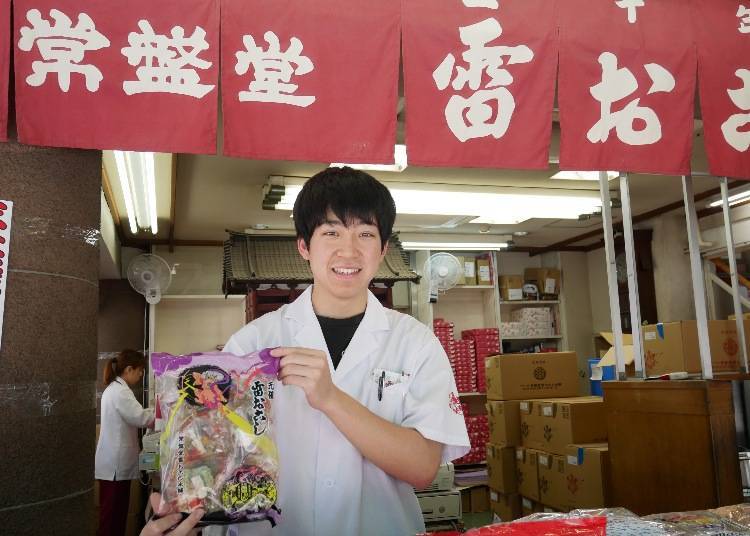
Kaminari okoshi (millet brittle) is a popular treat that was created in Asakusa during the Edo period. It is made by steaming and then roasting mochigome (glutinous rice) after which sugar and corn syrup are added. It is then pressed into a mold. It has a nostalgic flavor that reminds one of old Shitamachi (downtown part of Tokyo) and makes a great Asakusa souvenir.
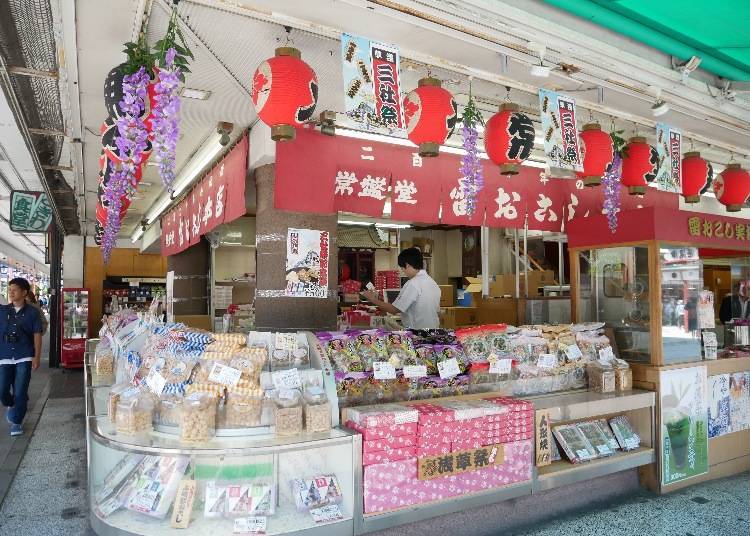
Tokiwado Kaminari Okoshi Honpo was established during the latter part of the Edo period and has been in business for about 250 years. The shop has seen much history and remained robust as the country modernized and has always been an object of public attention. The shop was destroyed during WWII, but was rebuilt afterwards and has continued to sell this simple treat that has again become a representative Asakusa souvenir. Over the years the shop has developed many new types of okoshi and during the past one hundred years many people have come to know this traditional sweet. You definitely should treat yourself to a bag of this old, traditional sweet when you visit Kaminarimon Gate!
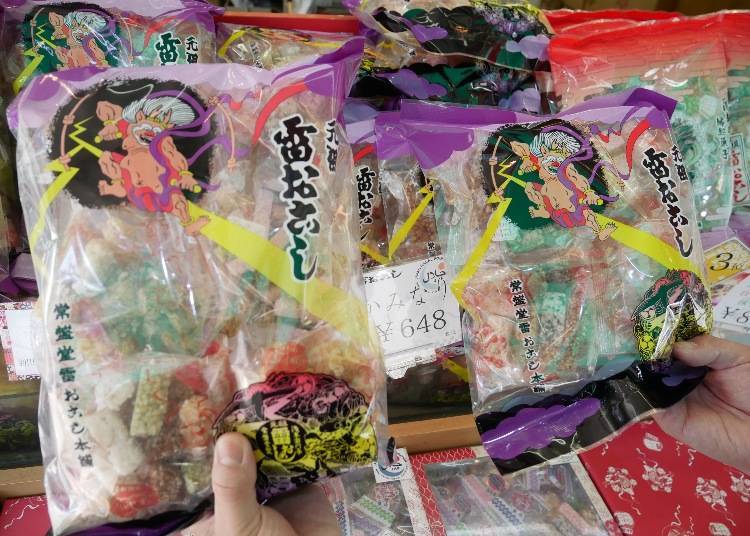
Kaminari is the top seller at Tokiwado and comes in bags in two sizes: large bags of six pieces and small bags of four pieces. We recommend the large bag because it offers a greater variety of flavors and types.
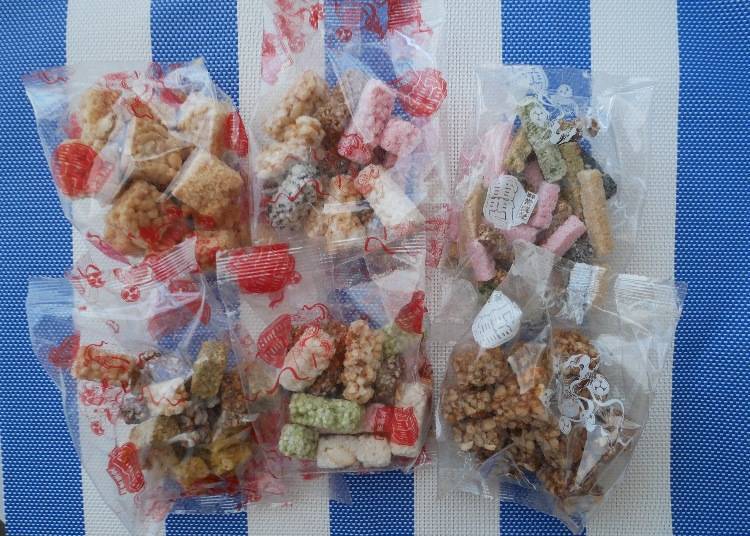
Each of the six pieces in the large bag is individually wrapped. Of the six pieces, five are of different types and flavors. We recommend this assorted collection if you are buying Kaminari Okoshi for the first time. The five different types are the white sugar and black sugar versions of “Kamiisobe”, Aji Roppo, Raijin, and Kaminari.
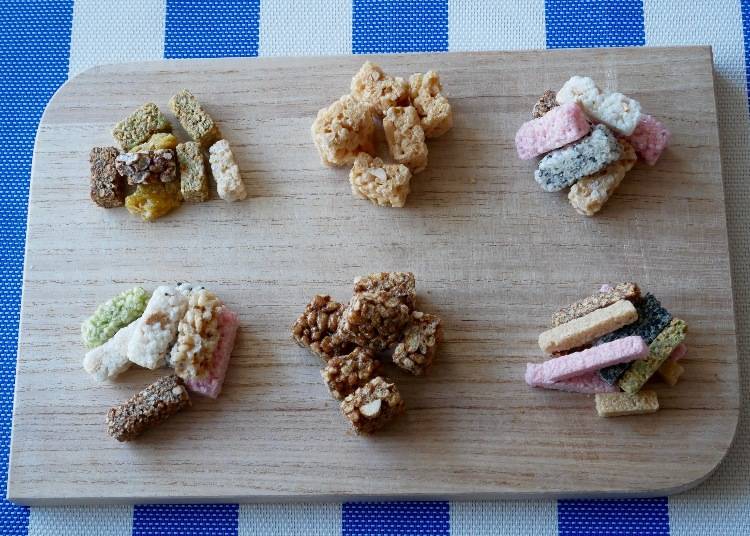
Let’s take a look inside each of the individually wrapped okoshi. Raijin, in the top row on the left, is the shortest of them all and the five different flavors are matcha, genmai, caramel, black sesame, and peanut. Compared to other okoshi in which the main ingredient is rice, Raijin has a greater amount of black sesame or peanuts in it giving it a firmer texture.
The two in the middle are the Kamiisobe; the white sugar one is in the top row and the black sugar one is in the bottom row. The Kamiisobe is nearly square in shape and compared to the other types, the rice grains are larger while the peanuts in it give it a crispier texture. The sweetness is imbued with a subtle salty flavor and has a very rich aroma from the black sugar produced in Hateruma, Okinawa.
Aji Roppo, on the right of the top row and left of the bottom row is very popular. In one small bag there are six different types of flavor: white sugar, black sugar, matcha, sesame, cherry leaf, and soy bean. Compared to the standard Kamiisobe, the rice kernels in okoshi are smaller and more densely packed together. The sweetness is subdued, yet the flavor rich, the sesame aroma being especially noticeable. The cherry leaf flavor tastes slightly salty.
The thinnest one on the bottom right is Raijin. It has small, densely packed rice kernels and has the hardest texture. It is not so hard that you can’t bite into it, but has a crisp texture and comes in such flavors as genmai, sesame, cherry leaf, and peanut.
These six bags of Kaminari okoshi may appear to be similar in flavor and texture, but there are subtle differences with each of them having a rich rice flavor that is as simple as it is beautiful.
-
Tokiwado Kaminari Okoshi Honpo (Kaminarimon Honten)常盤堂雷おこし本舗 雷門本店
- Address 〒111-0032 東京都台東区浅草1-3-2 / 1-3-2 Asakusa, Taito-ku, Tokyo 1110032, Japan
-
Nearest Station
1-minute walk from Asakusa Station (Ginza line, Asakusa line)
Hours: 10:00 - 19:00
Asakusa Silk Pudding: Recent Hit in Japanese Media!
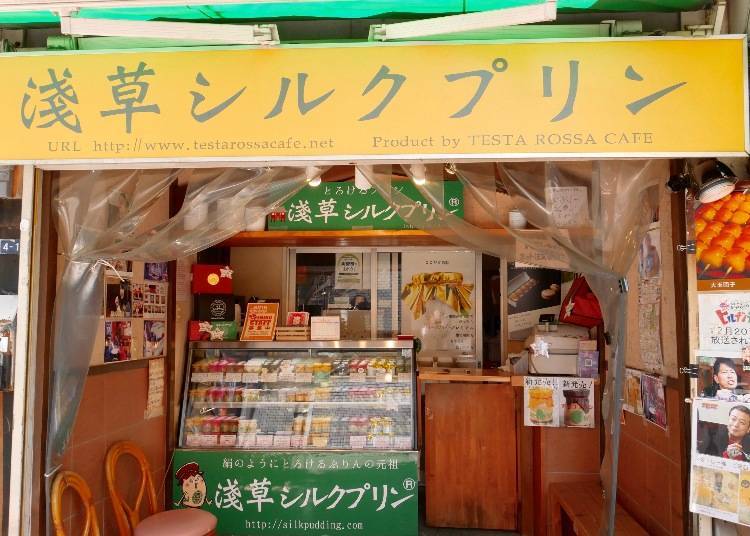
Asakusa Silk Pudding is located near the Sensoji Temple. This shop which sells more than ten types of pudding has received lots of coverage in the Japanese press. It is as smooth as silk and envelopes your whole mouth with a texture quite unlike that of typical puddings and it is this which sets it apart.
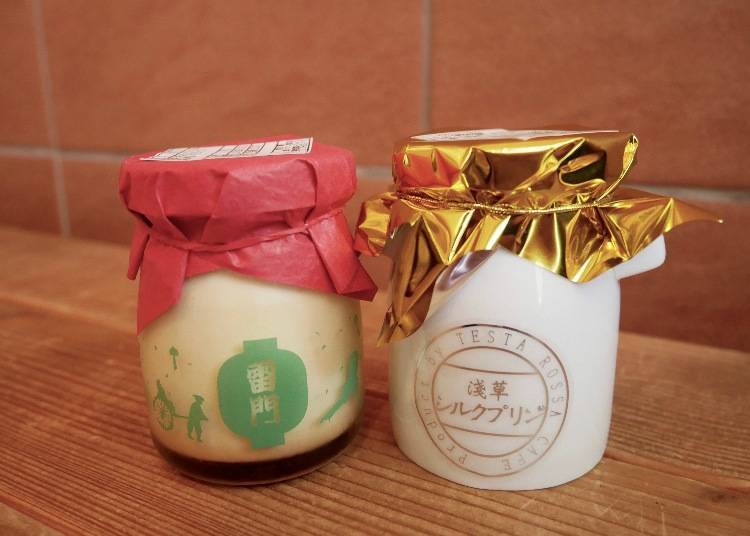
There are two types of Silk Pudding with a plain flavor: the Silk Pudding on the left and the Premium Silk Pudding on the right. Today we will introduce the Premium Silk Pudding. Only the best ingredients go into Premium Silk Pudding: pasteurized milk from Hokkaido and aged vanilla. The most care is given to the high-end brand Okukuji eggs which are delivered daily. No preservatives or additives are used, thus ensuring the delicious flavor of the natural ingredients.
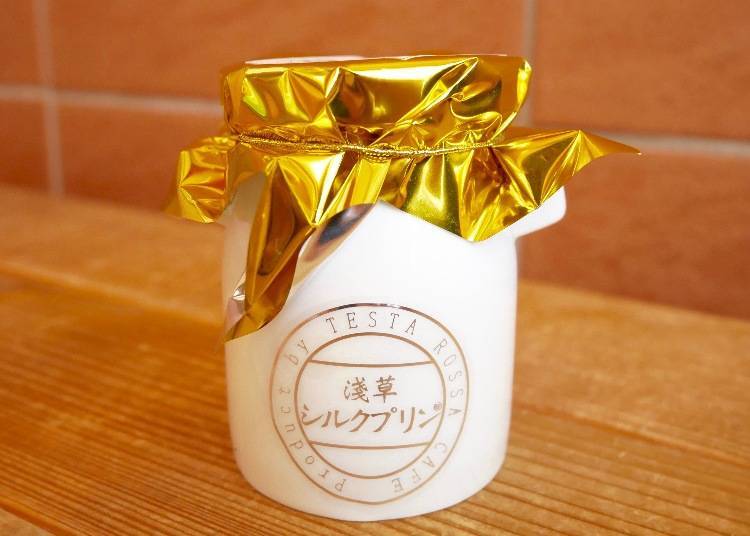

The moment you taste it, you will notice the difference between it and typical puddings because it really is as smooth as silk. It is very soft and dissolves the moment it touches your tongue. It has a rich egg flavor and with each bite the rich caramel sauce on the bottom oozes up to blend with the pudding. The shop is especially proud of its caramel sauce which has been developed over the years by skilled craftsmen to ensure the right balance between sweet and bitter and this is not done with machines, but entirely by hand so as to bring out the finest qualities.
-
Asakusa Silk Pudding浅草シルクプリン
- Address 〒111-0032 東京都台東区浅草1-4-11 / 1-4-11 Asakusa, Taito-ku, Tokyo 1110032, Japan
-
Nearest Station
3-minute walk from Asakusa Station (Ginza line, Asakusa line)
Hours: 10:00 - 21:00
3,000 Jumbo Melon Pan Sold in a Day! The Famous Kagetsudo near Sensoji Temple
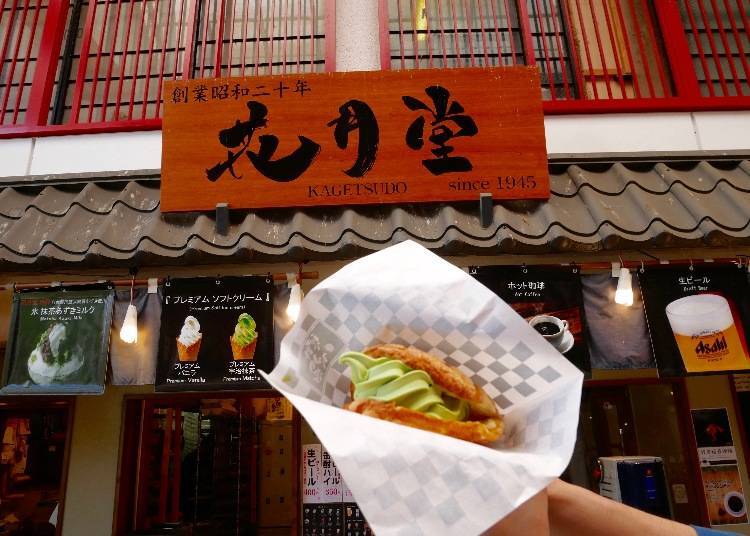
Kagetsudo is very famous for its Jumbo Melon buns. The trademark Jumbo Melon Pan of Kagetsudo is much, much softer than typical melon buns. This special feature of its soft texture has been achieved after many years of experimentation by the owner and the secret is in the fermentation. This takes three times as long as in the case of normal bread and uses a method similar to that in the brewing of Japanese sake which transforms the yeast and results in a remarkably soft melon bun.
It is not easy for the Jumbo Melon Pan to maintain this fluffy texture because adjustments must be made daily to take into consideration the effect of the weather, temperature, and humidity on the flour and manufacturing process. This is what sets it apart from typical melon buns.
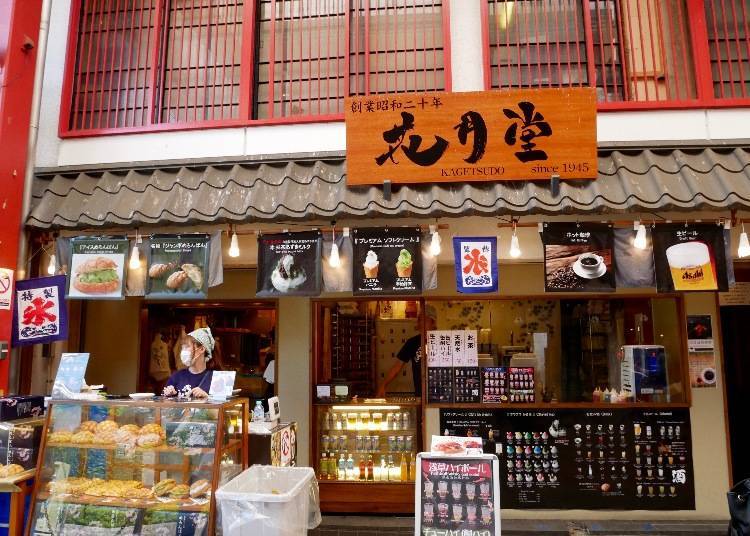

The surface of the melon bun used in the Matcha Ice Cream Melon Bun is lightly dusted with sugar to give it a crispy texture after it has been baked. The melon bun is soft and has a sweet egg aroma. The matcha ice cream in the center of the hot melon bun melts and infuses it with the rich flavor of matcha. The cold matcha ice cream cools the melon bun and makes for the perfect treat on a hot summer day in Tokyo.
-
Asakusa Kagetsudo浅草 花月堂本店
- Address 〒111-0032 東京都台東区浅草2-7-13 / 2-7-13 Asakusa, Taito-ku, Tokyo 1110032, Japan
-
Nearest Station
3-minute walk from Asakusa Station (Ginza line, Asakusa line)
Hours: 9:00 - 17:00 (until Jumbo Melon Pan are sold out)
Asakusa Menchi is Famous for its Menchi (ground meat) Cutlet
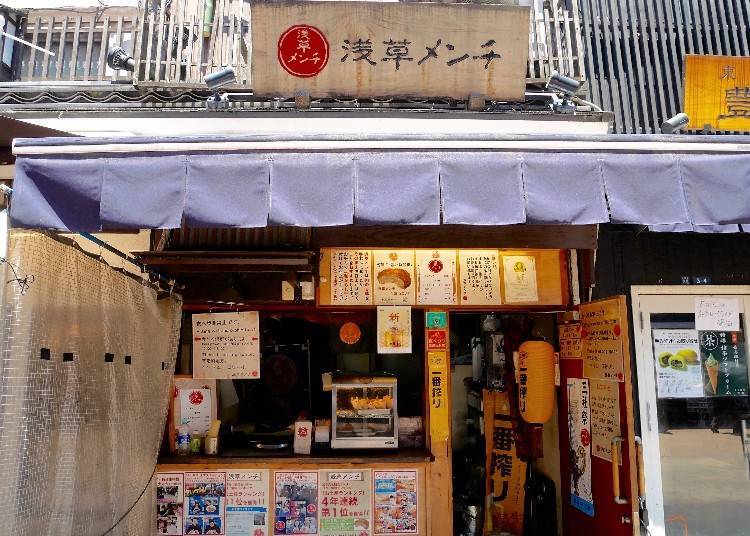
When strolling through Asakusa and sampling the foods there, be sure to visit Asakusa Menchi! Its menchi cutlet exudes the juices of the meat which impart its exquisite taste and costs only 200 yen. It is loved by Japanese and world travelers alike. The shop is thronged by eager customers who impatiently line up to get a seat in the shop. What is the secret to this shop’s menchi cutlet?
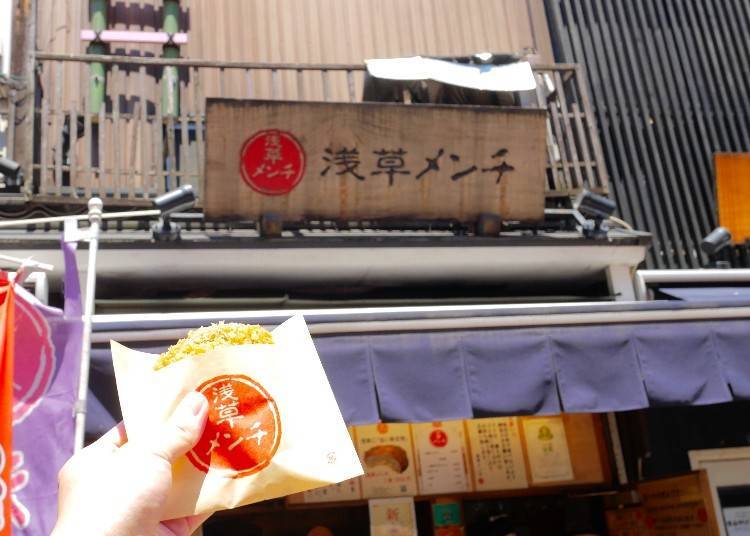
The meats used in the Asakusa menchi are beef and the special pork called Koza buta which are minced and cooked together, then dipped in bread crumbs and fried. Koza buta is relatively smaller than normal pigs and more time is spent in raising them. At one point they were on the verge of extinction. During the last 30 years this breed was once again cultivated and it is famous for its fine texture and abundant fat content which gives it a rich flavor. For this reason it is often referred to as phantom pork. This pork is mixed with beef that has relatively little fat content which results in an incomparable meat combination for the perfect mincemeat cutlet. The sweet flavor of the diced onions helps bring out the flavor of the meat juices which ooze from the cutlet the moment you bite into it.
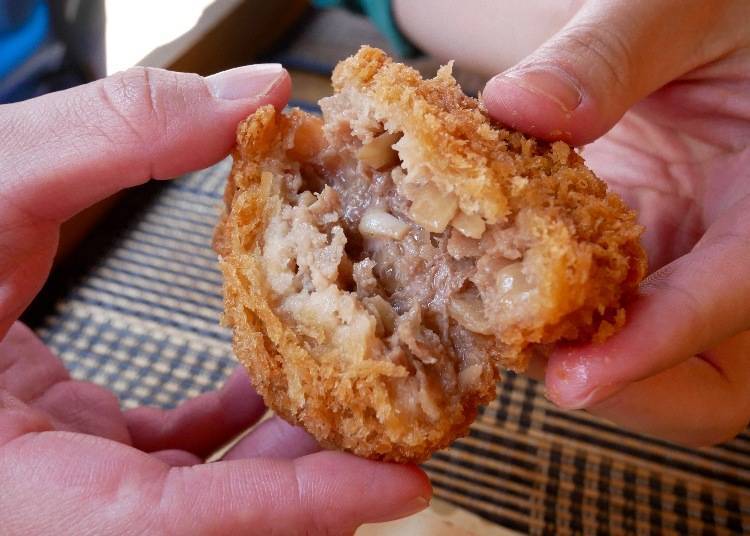
Be careful when you eat one of these delicious menchi cutlets because they are very juicy. And be careful not to burn your mouth because they are served piping hot. Also note that eating while walking in the shopping district around Sensoji Temple is prohibited. You can either eat the menchi cutlet inside the shop or in the space allotted for it to the left of the shop before continuing on your way.
-
Asakusa Menchi浅草メンチ
- Address 〒111-0032 東京都台東区浅草2-3-3 / 2-3-3 Asakusa, Taito-ku, Tokyo, 1110032, Japan
-
Nearest Station
3-minute walk from Asakusa Station (Ginza line, Asakusa line)
Hours: 10:00 - 19:00
Onigiri Asakusa Yadoroku is the Oldest Onigiri Shop in Tokyo
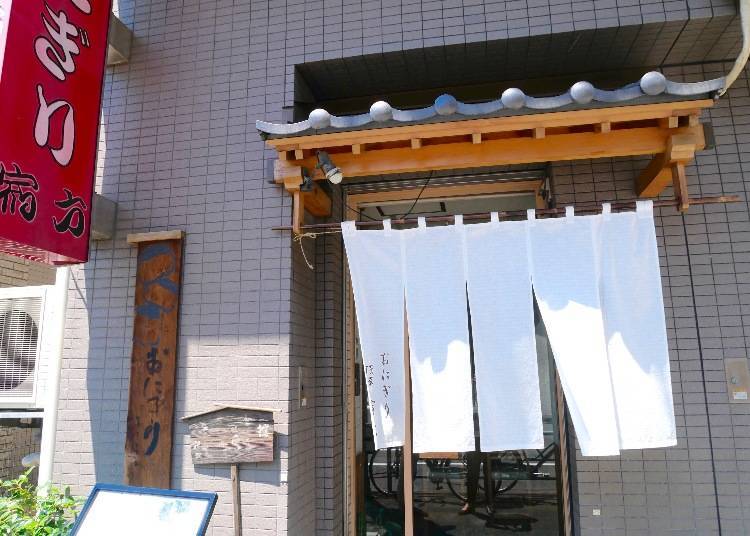
Onigiri Asakusa Yadoroku, with its warm atmosphere, is located behind the Sensoji Temple and within walking distance of the Asakusa Sensoji Kaminarimon Gate shopping area. Third-generation owner Mr. Miura and his mother take turns running this small shop performing all the tasks of cook, owner, and staff. The shop offers about ten types of onigiri (rice balls). It is open from lunch time until two in the morning with a one-hour break during that time.
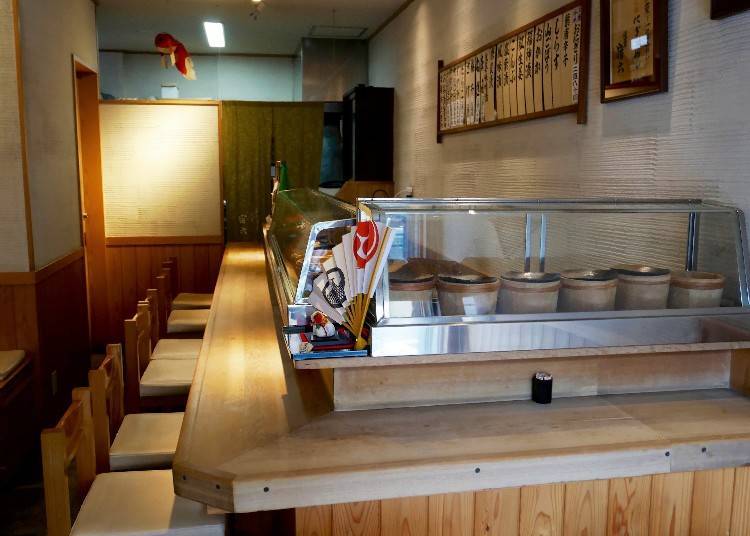
Asakusa Yadoroku was established in 1954 and is the oldest shop selling only onigiri in Tokyo and its notoriety has made it an Internet star. Mr. Miura, the third generation owner, carefully makes each onigiri using only trusted ingredients. Every year he selects the finest quality rice from the many brands produced nationally and this year he selected Koshihikari which is produced in Niigata Prefecture. The seaweed used is one unique to Tokyo Bay.
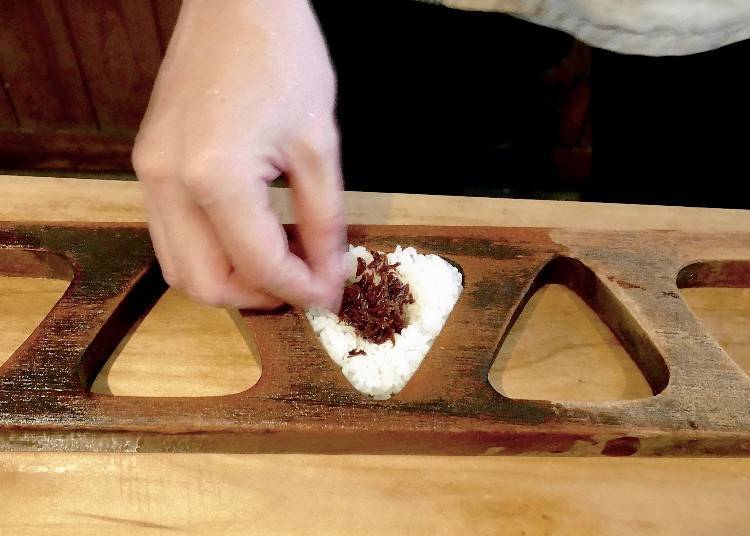

Each and every onigiri is handmade at the shop. The rice ball is first formed and then an ingredient added onto the rice. After putting salt on both hands, the rice ball is squeezed several times and then wrapped with seaweed. It may look like a simple procedure, but in fact it takes decades to master the art of doing this. You can sit at a counter and watch as the master creates these onigiri, just like when sitting at a sushi counter, the movement of the master’s hands as he makes each onigiri an art form in itself. Wrapped with crispy seaweed it looks like this.
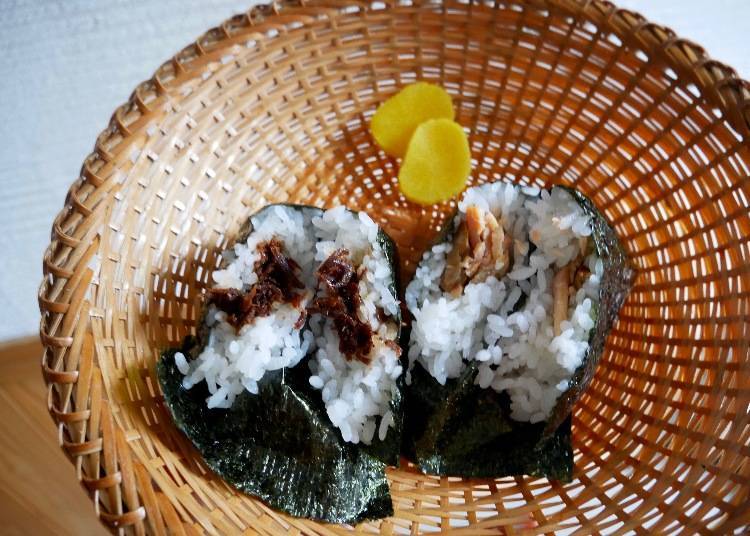
The salmon rice ball on the right is especially popular with visitors from Taiwan. The owner also recommends the grilled onigiri. Great attention is given to the rice used in both regular and grilled onigiri so as to bring out the full flavor of the rice. The seaweed wrapper with its unique aroma gives the onigiri added flavor. The seaweed, ingredients, dash of salt and rice do not clash, but give each onigiri a beautiful taste.
Both of these two types of onigiri are equally delicious, the salmon having a subtle salty flavor and the grilled one a flavor of its own that is unmatched. The grilled one uses special soy sauce with very small shrimp which gives the rice a sweet and sour flavor.
-
Onigiri Asakusa Yadorokuおにぎり浅草宿六
- Address 〒111-0032 東京都台東区浅草3-9-10 / 3-9-10 Asakusa, Taito-ku, Tokyo, 1110032, Japan
-
Nearest Station
7-minute walk from Asakusa Station (Ginza line, Asakusa line)
Hours: 11:30 - 17:00, 18:00 - 2:00
Written by Wang Feng
- Area
- Category
*Prices and options mentioned are subject to change.
*Unless stated otherwise, all prices include tax.
Popular Tours & Activitiess
Recommended places for you
-

[Extended Offer!](12% OFF KKday Coupon) Mt. Fuji Autumn Leaves, Powder Snow & More! 15 Best Tours to Experience Japan in Fall & Winter
-

Enjoy Japan's Gorgeous Winter Lights! Ride the Romancecar to Shonan no Hoseki Illumination
by: Guest Contributor
-

Simply Oishii Wagashi School Discover Japanese Culture Through Wagashi: A Hands-On Experience!
by: Guest Contributor
-

Don't Miss Out! The One Thing You Must Do Before Shopping at Mitsui Shopping Park LaLaport: Get Your Max 10% OFF Coupon Book
-

Get Ready to Catch 'Em All! First Ever Permanent Outdoor Pokémon Park Opening Near Tokyo!
-

LaLaport TOKYO-BAY North Building Now Open: Shop, Dine & Enjoy Events at LaLa arena, Just 2 Stops from Disney
by: Wemmy Chau
Inspiration for Accommodations
-

Enjoy Mt. Fuji from the Comfort of Your Room! Recommended Ryokan with Mt. Fuji View
-

Stay Near the Cherry Blossoms! Hotels for Cherry Blossom Viewing in Tokyo
-

Family-Friendly Hotels with Free Shuttle to Disneyland: Convenient Access for a Magical Stay
-

Top Ranked Hakone Hotels with Mt. Fuji View: Enjoy Stunning Scenery from Your Private Space
-

Convenient Tokyo Hotels with Airport Shuttle: Ideal for Families and Heavy Luggage
-

Stunning Tokyo Tower View Hotels: Enjoy Spectacular Scenery from Your Private Space
-

Convenient Asakusa Hotels with Kitchens: Ideal for Extended Family Visits
-

Experience Luxury: Hakone's 10 Best Five-Star Accommodations
-

Enjoy Mt. Fuji Autumn Leaves! Top Hotels Near the Popular Autumn Leaves Corridor
-

Experience Hakone Fall Foliage from Your Room with Stunning Views
-

True Craft Beer in Japan: 4 Tokyo Breweries You'll Fall In Love With
by: David McElhinney
-

Easy Day Trip from Tokyo! Ultimate Sightseeing Guide for Hakone & Lake Ashinoko!
-

Bonenkai and Shinnenkai: Japan’s New Year’s Work Parties that Will Have You Forget the Last Year and Welcome the Next!
-

Tokyo's Best 10 Sports Bars: Top Places to Catch The Game!
-

Exploring Tokyo Station: 11 Must-Visit Spots Around the Heart of Tokyo
-

Mouthwatering Ways to Start Your Day: 5 Perfect Morning Cafés Near Shibuya Station!
- #best ramen tokyo
- #what to buy in ameyoko
- #what to bring to japan
- #new years in tokyo
- #best izakaya shinjuku
- #things to do tokyo
- #japanese nail trends
- #what to do in odaiba
- #onsen tattoo friendly tokyo
- #daiso
- #best sushi ginza
- #japanese convenience store snacks
- #best yakiniku shibuya
- #japanese fashion culture
- #best japanese soft drinks


















